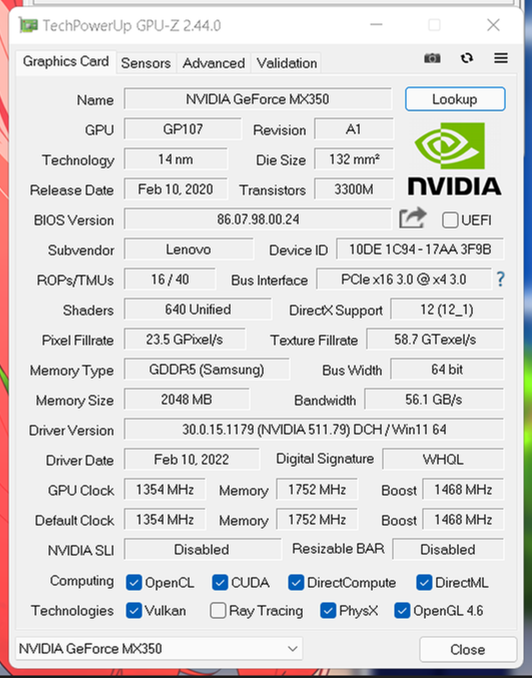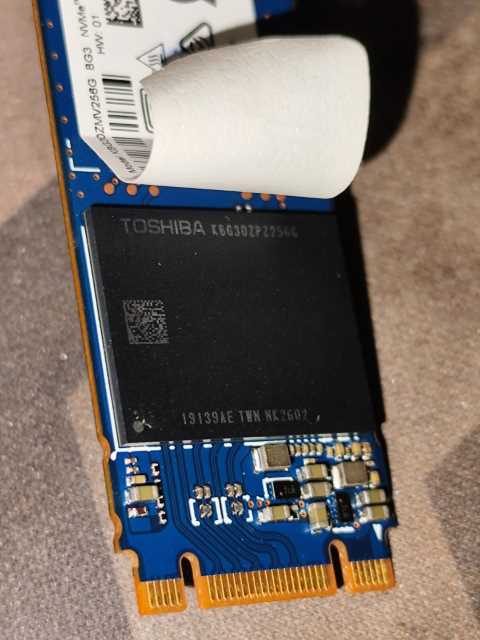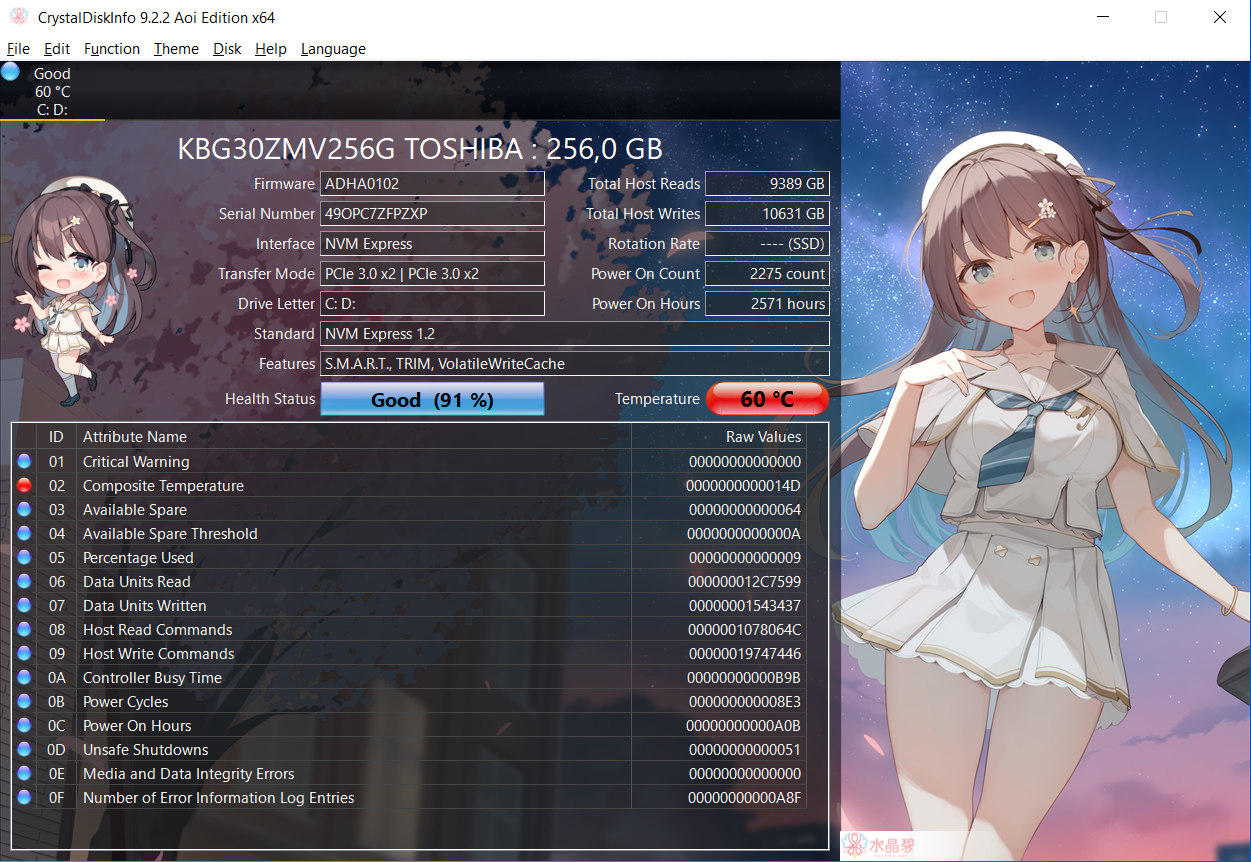Comparing: GeForce MX350 [Disk] vs TOSHIBA KBG30ZMV256G
In this comparison, we analyze two Disks: GeForce MX350 [Disk] and TOSHIBA KBG30ZMV256G, using synthetic benchmark tests to evaluate their overall performance. This side-by-side comparison helps users understand which hardware delivers better value, speed, and efficiency based on standardized testing. Whether you're building a new system or upgrading an existing one, this benchmark-driven evaluation offers valuable insights to guide your decision.
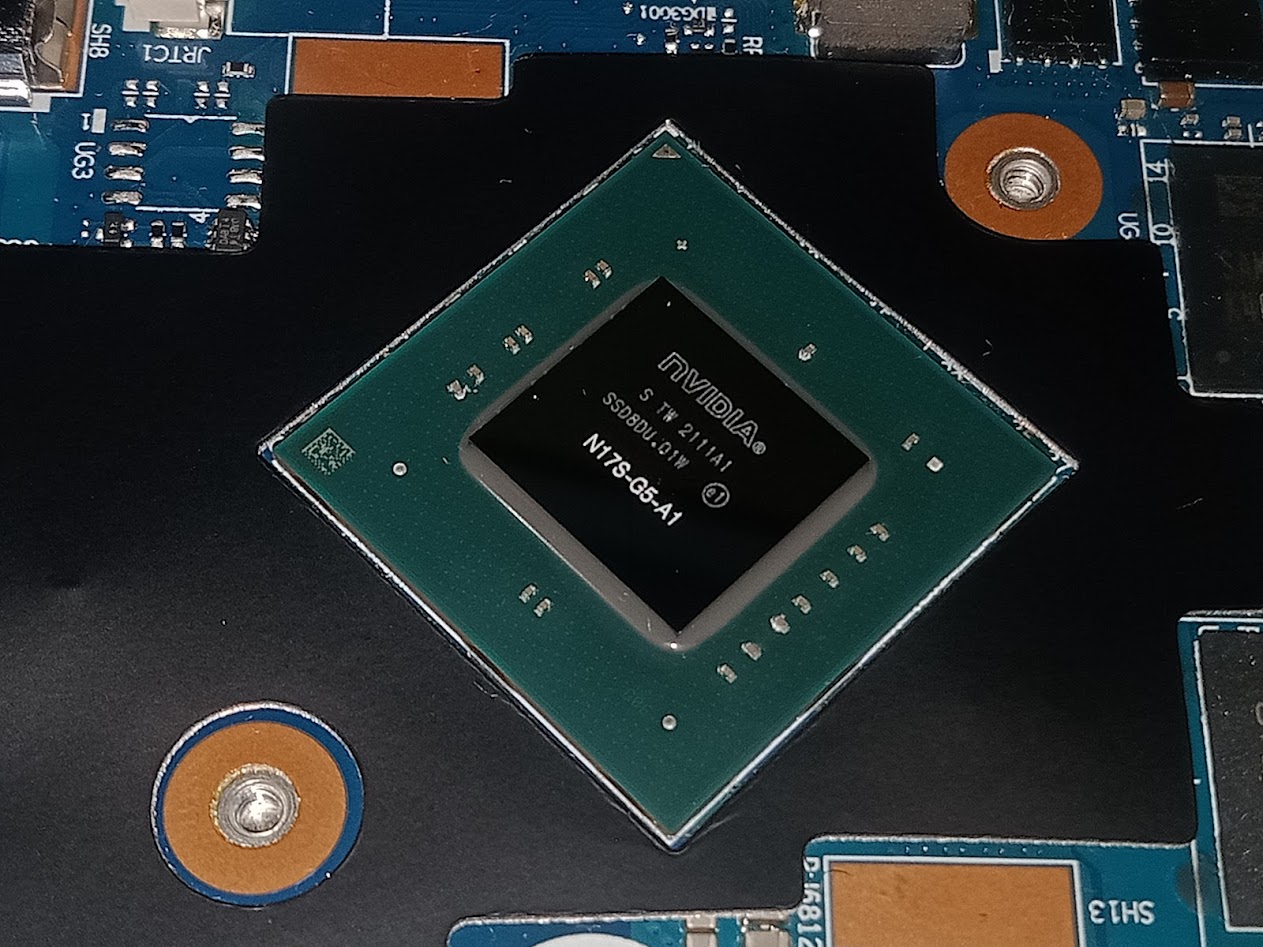
GeForce MX350 [Disk]
| Type: | Disks |
|---|---|
| Model: | GeForce MX350 [Disk] |
| Capacity: | 2GB, 1.5GB |
| Interface: | GDDR5 |
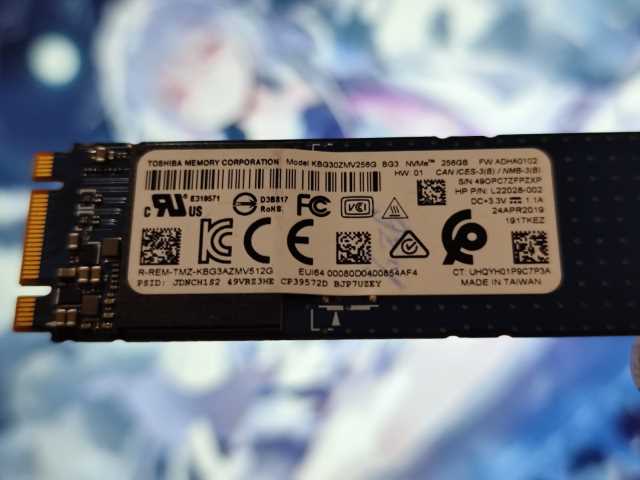
TOSHIBA KBG30ZMV256G
| Type: | Disks |
|---|---|
| Model: | KBG30ZMV256G |
| Capacity: | 256GB |
| Interface: | PCIe 3.0 x2 |
Specification Comparison Table
This specification comparison presents technical details of several devices or components to help you understand the key differences between each option. Use this table as a reference to determine which device best suits your needs.
| Specification | GeForce MX350 [Disk] | TOSHIBA KBG30ZMV256G |
|---|---|---|
| Brand | Samsung | TOSHIBA |
| Format | VRAM Disk | SSD M.2 NVMe 2280 |
| Capacity | 2GB, 1.5GB | 256GB |
| Interface | GDDR5 | PCIe 3.0 x2 |
Submission Comparison Table
This submission comparison table displays the number and details of benchmark data submissions from various devices or components. This information helps you understand the performance based on the benchmarks that have been tested, as well as providing an overview of the consistency and popularity of the available benchmark results.
| No. | Benchmark Software | GeForce MX350 [Disk] | TOSHIBA KBG30ZMV256G |
|---|---|---|---|
| 1 | ATTO Disk Benchmark - 64M |
Read: 1440.00 MB/s Write: 1330.00 MB/s |
Read: 1000.00 MB/s Write: 589.86 MB/s |
| 2 | CrystalDiskMark |
Read: 1113.58 MB/s Write: 995.48 MB/s |
Read: 774.69 MB/s Write: 401.20 MB/s |
Submission Comparison Chart
This chart visualizes the benchmark scores comparison between two hardware devices based on submitted data.
Media Gallery
A collection of photos of tested hardware. These images can help you identify the physical form, model, and variant of the hardware in question. These photos are from our own documentation, and if they are not available we may not be able to document them.
About Hardware GeForce MX350 [Disk]
The NVIDIA GeForce MX350 is an entry-level GPU designed for thin and light laptops, delivering significant graphics performance improvements over the processor's built-in iGPU. The GPU is based on the Pascal architecture with 640 CUDA Cores, and features 2GB or 4GB of GDDR5 memory with 64-bit bus width. The MX350 is generally used for light graphics tasks such as photo editing, light video, and casual gaming, and provides GPU acceleration for CUDA-enabled creative applications.
But in this particular test, a portion of the video memory (VRAM) on the GeForce MX350 was configured as a VRAMDisk. The concept of a VRAMDisk is similar to a RAMDisk, but it uses the VRAM of the GPU as a super-fast storage medium. VRAMDisk allows the creation of temporary, high-speed drives that can be utilized for technical experiments, speed testing, or graphics caching in certain scenarios. Although its capacity is limited and volatile (data is lost on reboot), the high bandwidth and low latency of VRAM provide compelling performance in certain contexts.
The tests were conducted on a Lenovo IdeaPad Slim 3i 14ITL6 laptop with Intel Core i5-1135G7 processor, 12GB DDR4 3200MHz dual channel RAM, and Windows 11 22H2 operating system. The VRAMDisk was created from a 2GB GeForce MX350 GPU, with virtual disk sizes of 1GB and 1.5GB, using special software called GPU RAM Drive.
Benchmark results with CrystalDiskMark recorded read speeds of 1113.58 MB/s and write speeds of 995.48 MB/s, showing the high bandwidth potential of VRAM as a temporary storage medium. Although the performance does not match DDR4-based RAMDisks, VRAMDisks remain a unique and attractive solution for certain technical purposes, especially for users who want to utilize idle VRAM for fast I/O processes. With its dedicated laptop GPU form factor and PCIe x4 Gen 3.0 interface, the GeForce MX350 VRAMDisk opens up new exploration possibilities in the world of experimental graphics-based high-speed storage.
Device test (testbed):
Device: Lenovo IdeaPad Slim 3i 14ITL6
CPU: i5 1135G7
RAM: 12GB DDR4 3200MHz Dual Channel (8+4)
OS: Windows 11 22H2
Friday, 06 August 2021 04:34:19 | Update: 1 month ago
About Hardware TOSHIBA KBG30ZMV256G
The TOSHIBA KBG30ZMV256G is a 256GB NVMe solid-state drive (SSD) specifically designed to deliver high performance in modern computing devices such as ultrabooks, thin laptops and space-constrained systems. Sporting an M.2 2280 form factor, this SSD offers an ideal combination of high speed and compact design, making it an excellent choice for users who require fast storage without sacrificing physical space within the device.
It is built with a PCIe Gen3 x2 interface and supports the NVMe 1.3 protocol, which is significantly faster than traditional SATA-based SSDs. Thanks to 3D NAND flash technology, the TOSHIBA KBG30ZMV256G is able to deliver consistent performance and better power efficiency, while extending the lifetime and reliability of the device. This technology also contributes to low power consumption, which is especially important for laptops and mobile devices that rely on battery efficiency.
In tests conducted using a ThinkPad T470 with an Intel Core i5-6300U processor, 8GB of RAM, and Windows 10 22H2 operating system, this SSD performed very well for a variety of daily computing needs. Based on the CrystalDiskMark benchmark, read speeds reached 774.69 MB/s and write speeds of 401.20 MB/s. Tests with the ATTO Disk Benchmark showed read speeds of up to 1000 MB/s and 589.86 MB/s write, while in the AS-SSD Benchmark, read speeds jumped to 1363.84 MB/s and 786.62 MB/s write. These results show that the SSD is capable of handling demanding tasks such as fast booting, large application loads and large file transfers very efficiently.
Overall, the TOSHIBA KBG30ZMV256G is an ideal choice for users who want an NVMe storage upgrade with high speed, low power consumption and a compact design. Suitable for professionals who require consistent performance under high mobility, this SSD also offers added value in terms of energy efficiency and long-term durability. As a product from a reputable brand like Toshiba (now Kioxia), its reliability and quality have been proven in the global market.
Device test (testbed):
Device: ThinkPad T470
CPU: i5-6300U
RAM: 8GB RAM
OS: Windows 10 22H2
Thursday, 10 August 2023 10:15:02 | Update: 1 month ago

